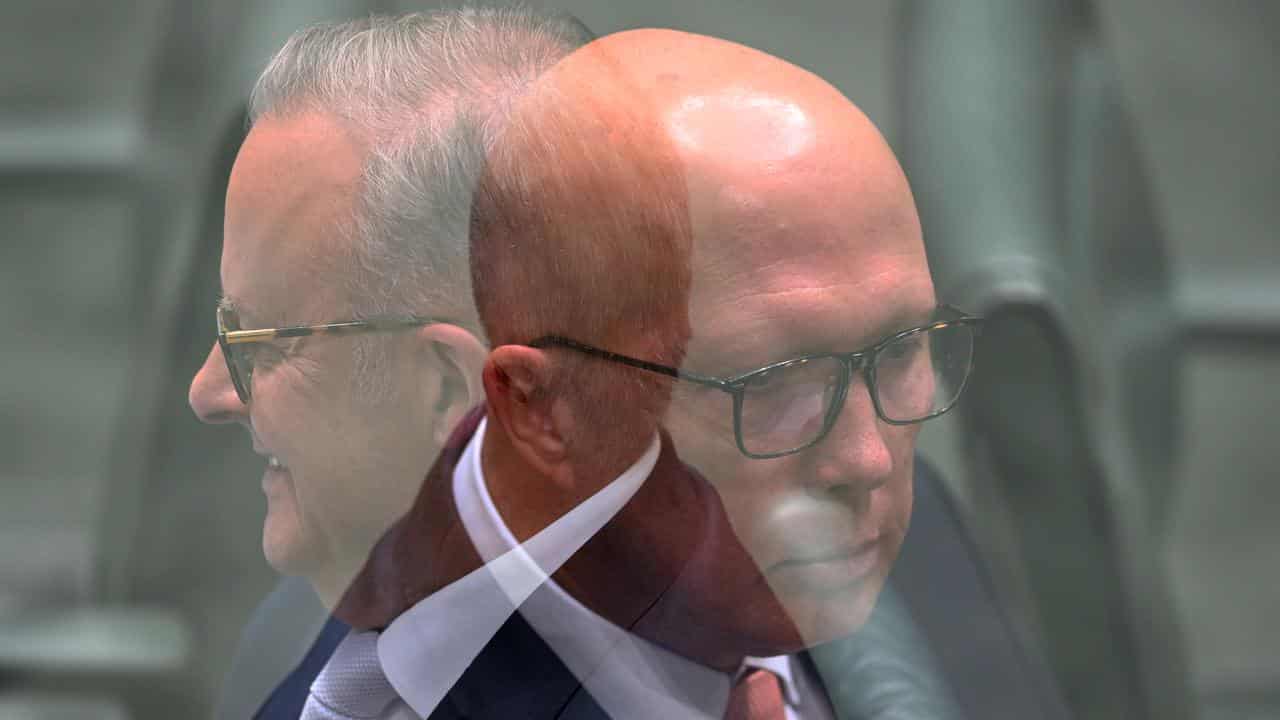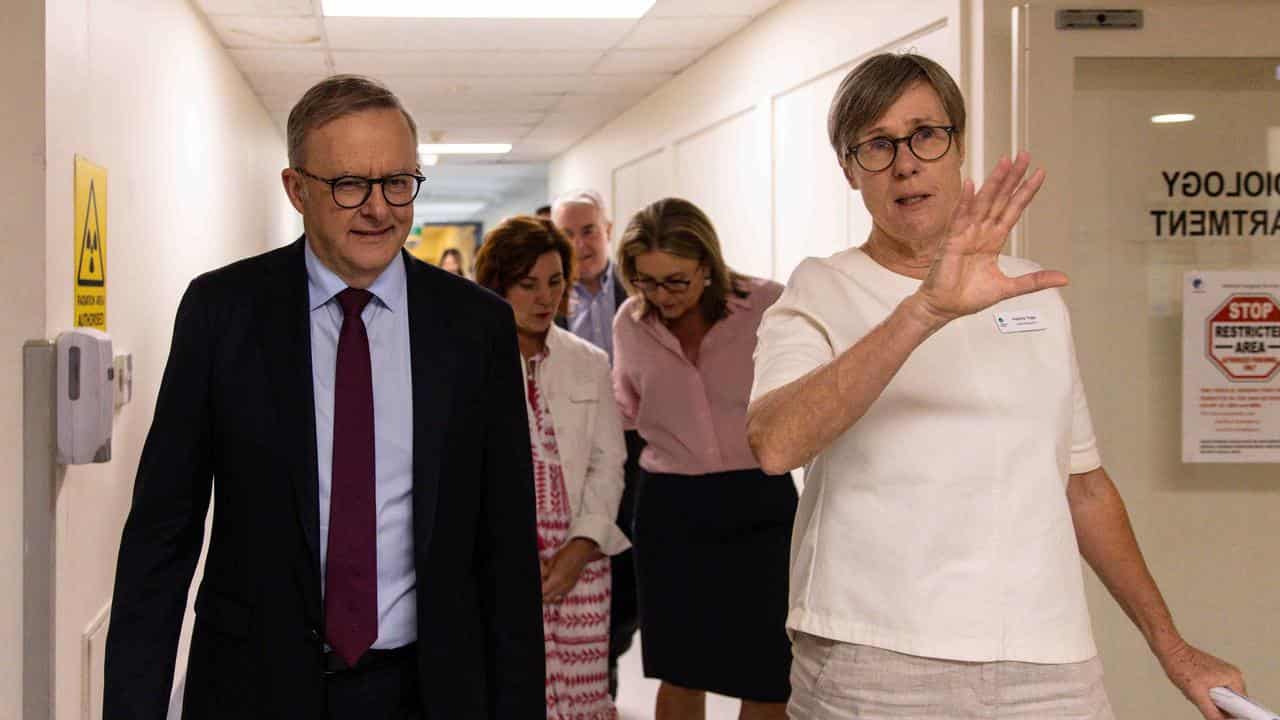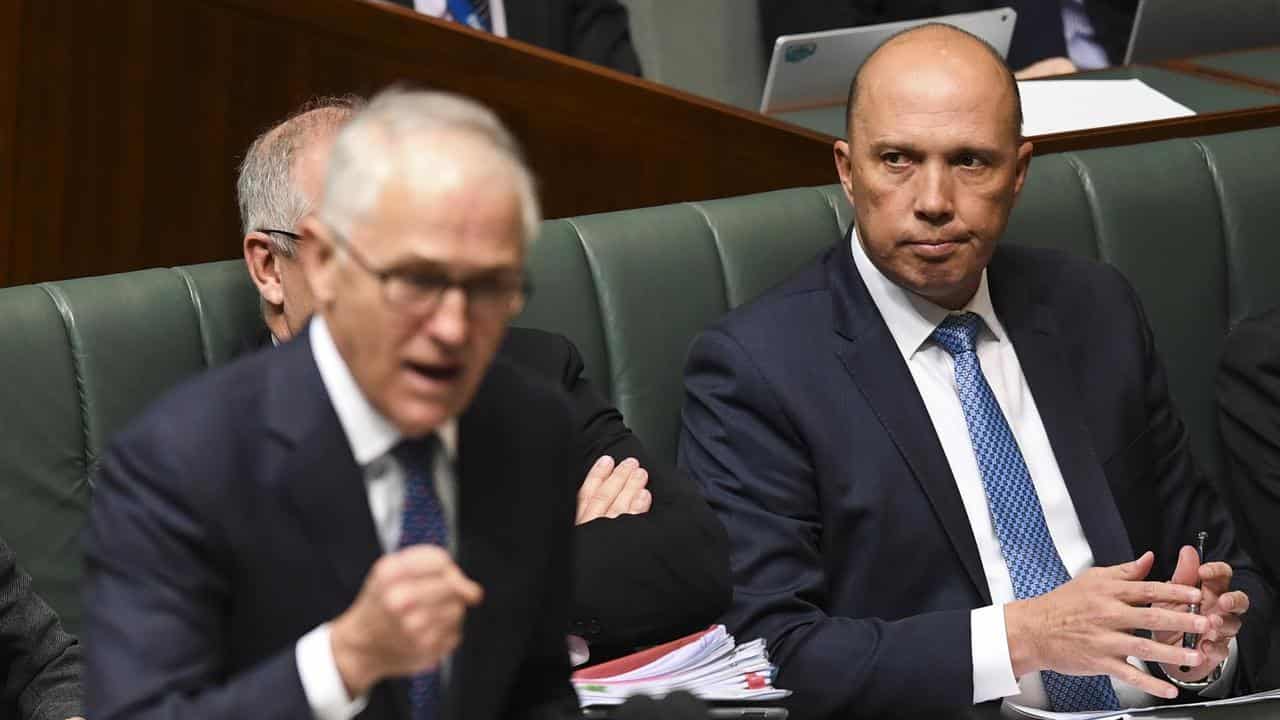
Labor claims Peter Dutton slashed $50 billion from hospital funding as health minister, but his plans were not carried out.
Prime Minister Anthony Albanese and Labor have been pushing the claim about the opposition leader ahead of the election.
"Our public health system is too precious to entrust to Peter Dutton and the Liberals, who ripped $50 billion out of public hospital funding when he was health minister," Mr Albanese said in February.

When asked about the basis of that claim, the PM's office referred AAP FactCheck to Health Minister Mark Butler.
Mr Butler's office pointed to the coalition's 2014 budget, when Mr Dutton was health minister, which a spokesperson said "clearly shows a $50 billion cut to public hospitals."
While Mr Dutton planned in 2014 to cut hospital spending by $50 billion over the coming decade, his forecast spending reductions did not happen.
Australian Institute of Health and Welfare data shows hospital spending has risen consistently over the past 12 years - including when Mr Dutton was the health minister.
Stephen Duckett, a health economist at the University of Melbourne, said the coalition did project $50 billion in hospital cuts when Mr Dutton was health minister.
However, most of the cuts never happened because Malcolm Turnbull backtracked in 2017 after replacing Tony Abbott as prime minister. Mr Dutton was shuffled out of the health portfolio in late 2014.
"Dutton put his hand up for a budget that aimed to cut $50 billion," Professor Duckett told AAP FactCheck.
"The reality that it didn't come to pass is also important."
After pledging no cuts to health during the election campaign, Mr Abbott's government announced co-payments for GP visits in 2014 and changes to hospital funding that overturned existing frameworks.
Prof Duckett said the 2014 budget axed funding guarantees and indexation changes under the National Health and Hospitals Network Agreement (p.13), which would have raised the federal share of hospital funding from 45 per cent to 50 per cent from July 2017.
"[It] was a pretty dramatic slash and burn budget," Prof Duckett said.
The coalition government estimated that changes to public hospital funding would save about $1.8 billion over the four years from 2014-15 (Budget Paper 2, p.126).
Stephen Bartos, a government finance expert at the University of Canberra, said the funding cuts were slated to grow rapidly from 2017-18 (Budget Overview, p.7).
"Savings are much smaller over one or two years than over decades," Professor Bartos told AAP FactCheck.
The Treasury estimated the sum of projected cuts over the decade to 2024-25 would $57 billion in a written answer (p.2) to a question in a 2014 budget estimates hearing.
There was significant backlash over the plan, Prof Duckett explained, and eventually, most of the cuts were abandoned after Mr Turnbull took over as the prime minister in 2015.
Mr Turnbull signed a deal with states and territories that committed to lifting federal hospital funding by $2.9 billion from July 2017 to June 2020, capping annual growth to 6.5 per cent, a 2016 Senate report said (p.33).
That move took annual federal spending on public hospitals from $17.2 billion in 2015-16 to $21.1 billion in 2019-20, according to forecasts in the coalition’s 2016-17 budget (p.5-12).
While that was an increase on the coalition's 2014 plan, it was lower than the $26 billion in annual funding forecast by 2019-20 under the Labor government's 2013-14 budget (p.16).
Prof Duckett said that while then prime minister Julie Gillard's plan saw federal funding rise from 45 per cent to 50 per cent, Turnbull's model retained a 45 per cent contribution and capped funding growth at 6.5 per cent per year.
"They didn't change it quite back as far as it was,” he said.

Since the coalition changed its policy, federal hospital spending has continued to increase, though not as quickly as the Gillard Labor government had projected.
The Conversation concluded in May 2016 that claims the coalition cut $50 billion from hospitals (along with about $30 billion from schools) were misleading, and it would be more accurate to say Labor's 2013 plans were "unpromised" by the coalition.
Lesley Russell, an adjunct associate professor at the University of Sydney's Leeder Centre for Health Policy, said a lot had happened to national health reform funding after the 2014 budget, including federal funding changes during COVID-19.
"It is absolutely accurate to say that Dutton had the intention to cut $50 billion," Dr Russell told AAP FactCheck.
She said the 2014-15 budget also changed preventative health policies, referencing axing the national preventive health agency, which had an enduring impact on the budget.
"If prevention had been done well ... a decade ago, arguably we would be spending much less on managing chronic illnesses in hospitals now," she said.
AAP FactCheck is an accredited member of the International Fact-Checking Network. To keep up with our latest fact checks, follow us on Facebook, Instagram, Threads, X, BlueSky, TikTok and YouTube.




